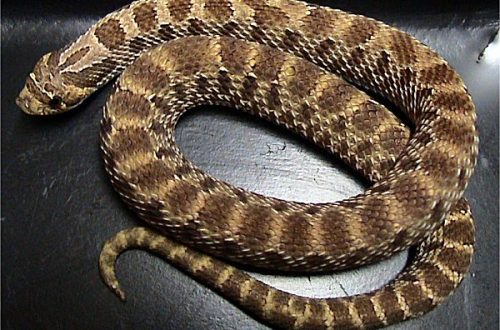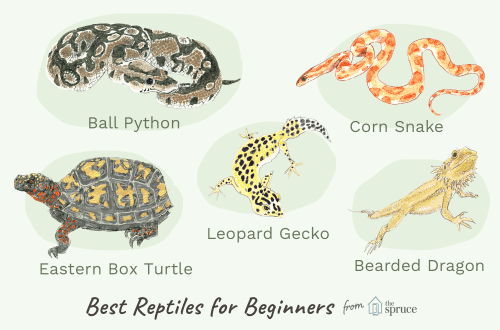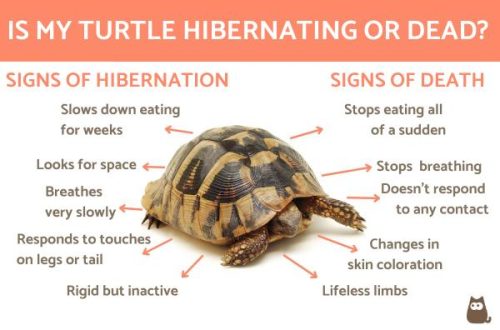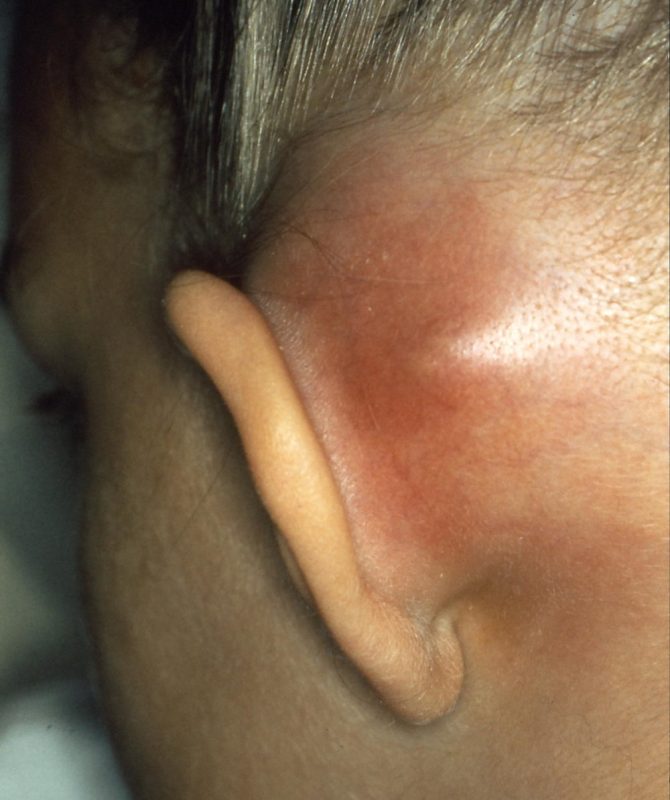
Abscesses, otitis (ear inflammation)
Page 1 from 2
Frequent symptoms: total bloating (edema) around the ears or on the extremities Turtles: most often water Treatment: surgery is usually required
The reasons:
The cause of abscesses is trauma to the skin, damage to them by ticks. Often, abscesses occur in places of abrasions when keeping turtles on a concrete or cement floor. Most often they are located subcutaneously, while swelling appears at the site of the lesion. Also, the causes of abscesses can be fungal, bacterial and other infections at the sites of skin injuries.
Otitis in aquatic turtles is associated with hypovitaminosis A, when desquamation of the epithelium of the ducts of the Eustachian tubes and blockage of the inner ear canal occurs. In addition, this is associated with retrograde infection, when the microflora from the oral cavity penetrates through the Eustachian tube into the tympanic cavity, i.e. As a result of an ascending infection of the Eustachian tube. This is more common in adult turtles, especially if a film is constantly present on the surface of the water. Otitis has also been observed in wild turtles, although less frequently than in captivity. This is attributed to the irritating effect of cyclic hydrocarbons and other chemicals that pollute water bodies. Severe short-term hypothermia can also contribute to the development of otitis, but more often this is associated with constant low temperatures of water and land.
An ear infection can spread to adjacent structures and cause osteomyelitis of the jaw, an ascending inflammation of the tissue, and possibly damage to the eyes.
In most cases, poor hygiene conditions and reduced immunity (eg, inadequate nutrition, low temperature) are the determining factors: – Otitis occurs more often in semiaquatic species of turtles when water quality is not respected. – Land species suffer from unsuitable low temperatures when kept without heat lamps.
Symptoms:
– The appearance of a spherical formation in the projection of the tympanic cavities. – Obvious asymmetry of the head. – Discharge may be present at the posterior pharyngeal exit points of the Eustachian tubes on both sides. – When the infection is active, the animal may rub the ear with its front paw. – The balance of the animal usually does not suffer, but this is possible. “Because it is very difficult to assess hearing in turtles, it is not known whether an ear infection impairs hearing. Abscess formation begins in the form of acute cellulitis, causing a concentration of pus and dead cells in the subcutaneous tissue. Then a so-called capsule is formed with a purulent thick material in color from yellowish-white to grayish-green. Abscesses most often form in the area of the tympanic shield – ears (otitis media), nasal chambers, joints, cloaca and in the submandibular space. Superficial abscesses that form in the subcutaneous tissue usually break inward, since the skin of turtles is very dense, and the subcutaneous tissue, on the contrary, is poorly developed. Very often, local abscesses metastasize, mainly through the lymphogenous route, and form new foci in the superficial and deep tissues. This is very typical for land turtles after 10 – 15 years of age, kept in captivity for a long time. Pus in reptiles is dense and usually does not resolve if it is in a closed cavity.
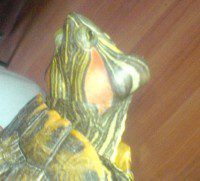
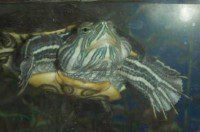

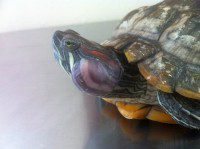
ATTENTION: The treatment regimens on the site can be obsolete! A turtle can have several diseases at once, and many diseases are difficult to diagnose without tests and examination by a veterinarian, therefore, before starting self-treatment, contact a veterinary clinic with a trusted herpetologist veterinarian, or our veterinary consultant on the forum.
Treatment plan with surgery:
If the abscess is dense and has not broken through, then an operation is performed under local or general anesthesia by a herpetologist veterinarian. In the absence of a qualified veterinarian-herpetologist in the city (in small remote towns), you can resort to the help of a familiar general veterinarian who agrees to perform the operation according to the scheme below and with consultations on vet.ru.
If the purulent focus independently broke into the region of the upper jaw, then you can simply treat all visible wounds – with Terramycin spray for 3 days (a scab should form), then with any epithelial ointment – Actovegin. After treatment, leave the turtle without water for an hour. It is advisable to pierce her with a short course of the antibiotic Baytril 2,5% at the rate of 0,2 ml / kg. An injection is made in the muscle of the shoulder, 1 time per day, the general course is 7 days.
If the abscess has not yet formed, but the edema has appeared, the veterinarian performs an autopsy and rinses the cavity, then the cavity must be regularly treated (washing and laying Levomekol ointment), a course of the antibiotic Baytril 2,5% and the anti-inflammatory drug Ketofen / Rimadil. Especially in the case of myositis (determined by the veterinarian). Myositis is a common name for diseases characterized as an inflammatory lesion of the skeletal muscles of various origins, various symptoms and course of the disease.
For treatment after surgery, you need to buy:
- Spray Terramycin or Chemi Spray | 1 vial | veterinary pharmacy
- Ointment Actovegin or Solcoseryl or Eplan | 1 tube | human pharmacy
- Baytril 2,5% | 1 vial | veterinary pharmacy
- Syringes 0,3 ml, 1 ml, 5 or 10 ml | human pharmacy May be required:
- Eleovit | 1 vial | veterinary pharmacy
- Ringer-Locke solution | 1 vial | veterinary pharmacy or Ringer’s solution | 1 vial | human pharmacy + Glucose in ampoules | human pharmacy
If the purulent focus has independently broken into the region of the upper jaw, then you can simply treat all visible wounds – with a Terramycin or Chemi-spray spray, for 3 days (a scab should form), then with any epithelial ointment – Actovegin / Solcoseryl / Eplan, etc. After treatment, leave the turtle without water for an hour. In addition, it is advisable to pierce her with a short course of antibiotic, preferably 2,5% Baytril, at the rate of 0,2 ml per 1 kg of body weight. An injection is made in the muscle of the shoulder, 1 time per day, the general course is 7 days.
Small sores (superficial pimple-like scabs) may fall off on their own after a while or be scratched off by a turtle. If it was not an abscess, but purulent otitis media, and at the same time it fell off, then it is necessary to examine the turtle for pus in the abscess cavity and in the oral cavity. The process can recur if pus remains in the cavity.
Treatment regimen without surgery:
In the absence of a veterinarian willing to perform the operation, you can try to resort to this method: 1. Improve the conditions for keeping and feeding the turtle. The content is mainly in dry heat (even night temperatures are not lower than 23-24 degrees), not in water, especially the first 2 weeks of the course (releasing it into the water a couple of times a day for feeding and so as not to become dehydrated). 2. Conduct a course: Baytril 10-14 days (depending on the severity of the disease). 3. Vitamins (Eleovit or analogues) 4. When refusing food – Ringer with glucose and ascorbic acid in a small amount, no more than 1% of the turtle’s weight. 5. At the initial stage – try to gently squeeze the abscess into the oral cavity, followed by washing through the nostrils (this is effective only in the case of the very beginning of the formation of purulent masses, while they are still liquid). The dynamics of the condition of the turtles, as a rule, is as follows: a few days after the start of treatment, the inflammation stops, the redness and swelling around the abscess disappears, and the abscess itself “fades” slightly. By the 10-14th day of the course, the lump usually decreases significantly in size (sometimes after the end of the antibiotic course it may slightly increase again), but complete resorption most often occurs in a month or two. The subsequent carefully verified maintenance in optimal temperature conditions for this type and on a full-fledged diet is almost a 100% guarantee of complete recovery and the absence of relapses. However, given the presence of a capsule and the density of pus, the pathogen will most likely remain somewhere in a place where antibiotics do not penetrate.



